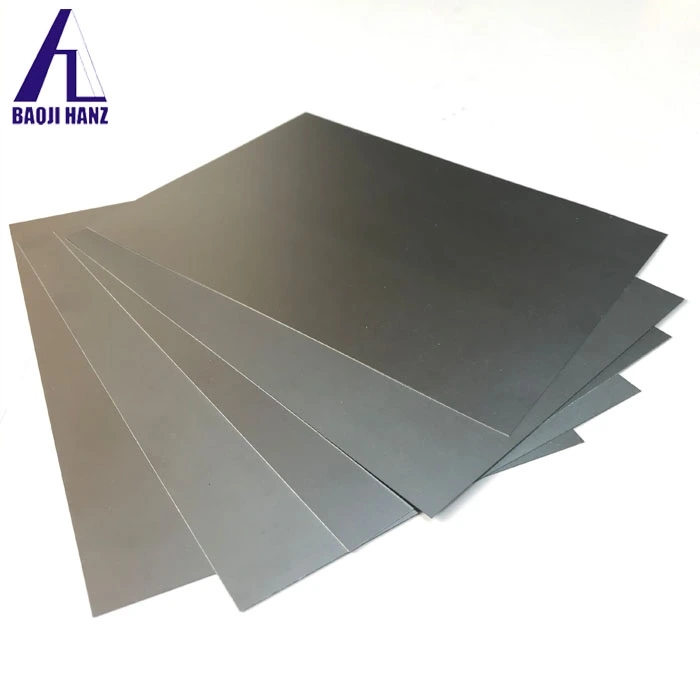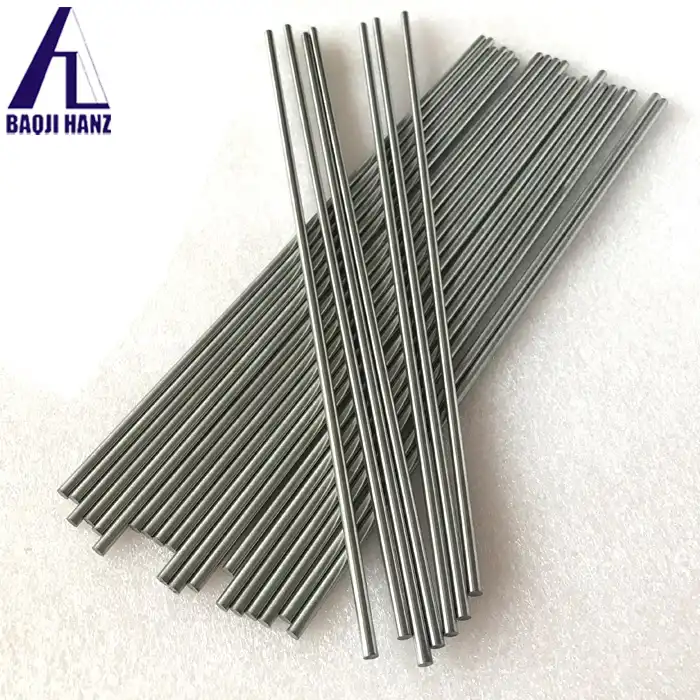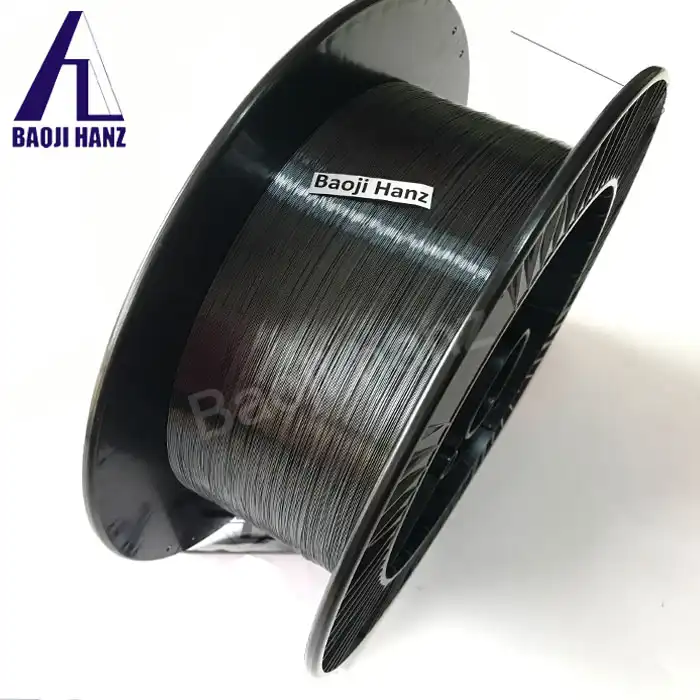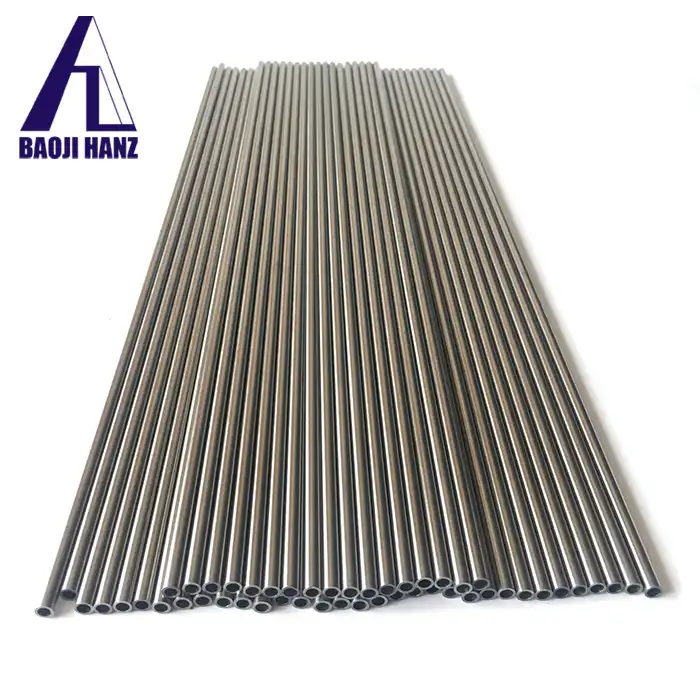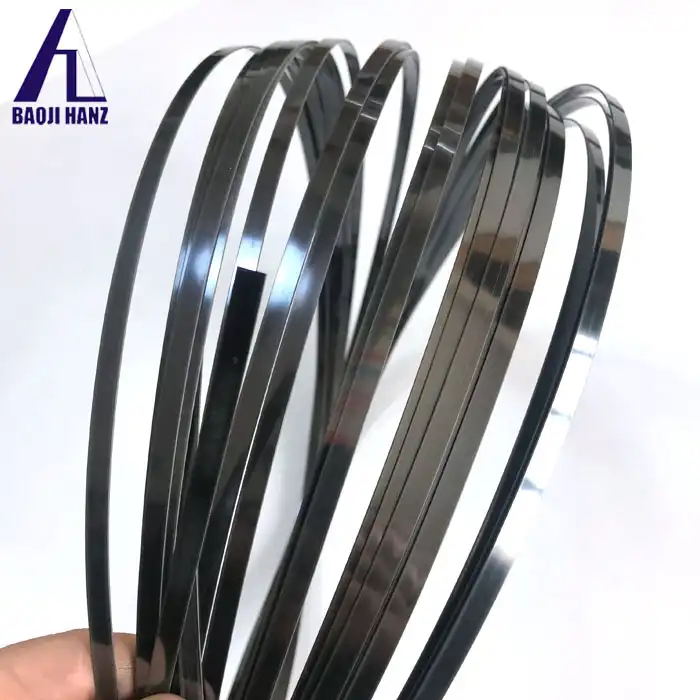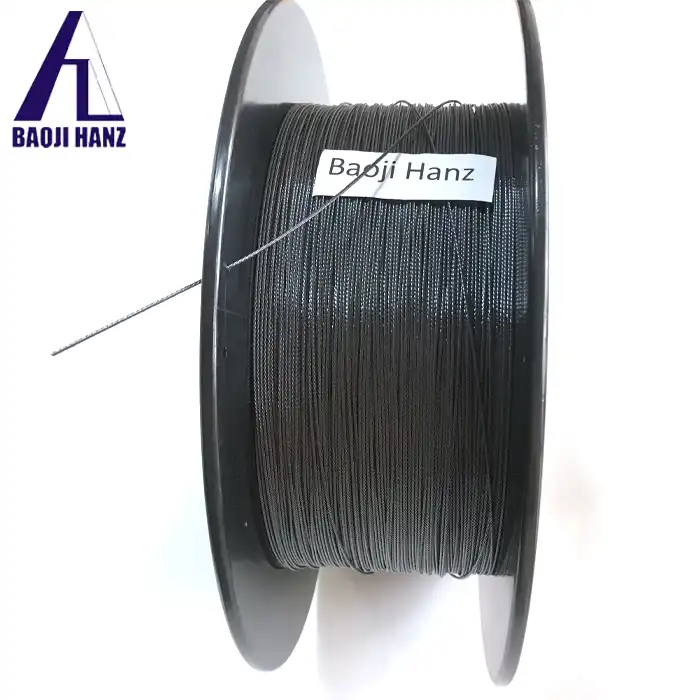What are the advantages of using TiNi ropes over traditional materials?
2025-03-26 21:38:18
The evolution of materials science has revolutionized countless industries, with advanced alloys offering solutions to challenges that traditional materials cannot address. Among these innovations, Memory shape TiNi rope stands out as a remarkable engineering achievement. Crafted from Nitinol (a nickel-titanium alloy), these ropes combine exceptional mechanical properties with unique functional characteristics that traditional materials like steel, nylon, or carbon fiber simply cannot match. From their ability to return to predefined shapes after deformation to their incredible durability under extreme conditions, TiNi ropes represent a significant leap forward in material capability. In this article, we'll explore the multifaceted advantages of using Memory shape TiNi rope compared to conventional alternatives, highlighting why they're becoming increasingly important across various high-performance applications.
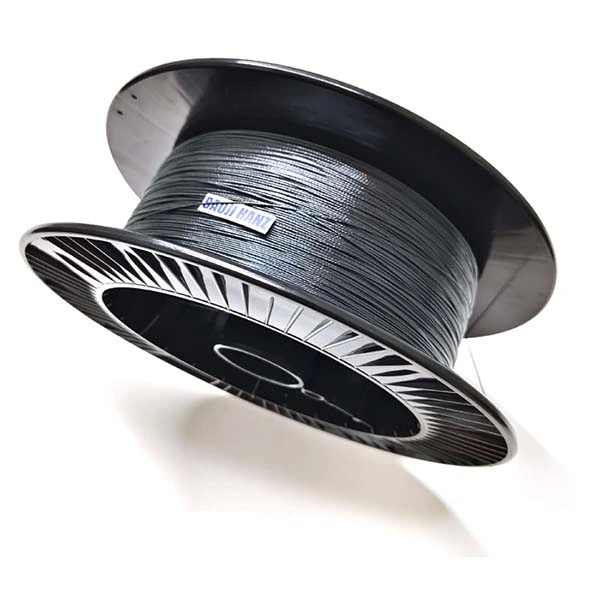
Superior Mechanical Properties of TiNi Ropes
Unparalleled Strength-to-Weight Ratio
Memory shape TiNi rope offers an exceptional strength-to-weight ratio that surpasses most traditional rope materials. With a tensile strength of approximately 1450 MPa, these ropes can withstand substantial loads while maintaining a relatively lightweight profile. This advantageous characteristic stems from the unique atomic structure of the nickel-titanium alloy, which creates strong intermetallic bonds that resist deformation under stress. Traditional materials like steel cables may offer comparable strength but at a significantly higher weight penalty, while synthetic materials such as nylon or polyester lack the necessary tensile properties for high-load applications. In precision engineering fields where every gram matters, Memory shape TiNi rope provides the optimal balance between structural integrity and weight efficiency. Baoji Hanz Metal Material Co., Ltd. achieves this superior performance through their sophisticated hot rolling-drawing-annealing-twisting process, resulting in ropes that maintain consistent mechanical properties throughout their cross-section, unlike many layered conventional materials that may have weak points at layer interfaces.
Superior Fatigue Resistance
One of the most significant advantages of Memory shape TiNi rope over traditional materials is its exceptional fatigue resistance. While conventional metal cables typically fail after repeated bending cycles due to work hardening and microcrack formation, Nitinol-based ropes can withstand millions of flex cycles without significant degradation in performance. This remarkable endurance stems from the superelastic properties of the alloy, which allows it to accommodate strain through reversible atomic rearrangements rather than permanent dislocation movement that leads to fatigue in conventional metals. In practical applications, this means TiNi ropes can be subjected to continuous flexing, such as in fishing applications where repeated casting and reeling creates cyclical stresses, without the progressive weakening that would quickly render traditional materials unsafe. According to performance testing, Memory shape TiNi rope retains over 90% of its original strength properties even after hundreds of thousands of bending cycles, whereas stainless steel cables typically show significant degradation after just tens of thousands of cycles under similar conditions.
Exceptional Corrosion Resistance
Memory shape TiNi rope exhibits superior corrosion resistance compared to traditional metal ropes, particularly in harsh environments containing moisture, salt, or chemical exposures. The nickel-titanium alloy naturally forms a protective titanium oxide layer on its surface that shields the material from oxidative damage. This self-passivation mechanism provides intrinsic protection against rust and corrosion without requiring additional protective coatings that might wear off over time. Traditional steel cables, even when galvanized or stainless, eventually succumb to corrosive forces, particularly in marine environments or industrial settings where exposure to chemicals is common. The exceptional corrosion resistance of Memory shape TiNi rope makes it particularly valuable in applications such as deep-sea fishing, where exposure to saltwater typically degrades conventional materials rapidly. Tests conducted on Baoji Hanz's TiNi ropes demonstrate negligible mass loss and surface degradation even after extended immersion in simulated seawater environments, far outperforming traditional materials which showed significant deterioration under identical conditions. This corrosion resistance translates to longer service life and reduced maintenance costs in challenging operational environments.
Unique Functional Capabilities
Shape Memory Effect
The most distinctive advantage of Memory shape TiNi rope over traditional materials is its remarkable shape memory effect. This phenomenon allows the rope to return to a predetermined shape when exposed to a specific temperature threshold, regardless of how severely it has been deformed below that temperature. This capability stems from the unique crystalline structure of Nitinol, which undergoes a phase transformation between martensite and austenite states in response to temperature changes. Traditional materials such as steel or nylon permanently deform once their elastic limit is exceeded, requiring replacement rather than recovery. In practical applications, this means a Memory shape TiNi rope can be tightly coiled for storage or transportation, then automatically deploy to its original form when needed simply through temperature adjustment. This property is particularly valuable in space-constrained situations where pre-formed configurations must be maintained despite interim deformation. Baoji Hanz Metal Material Co., Ltd. has perfected the manufacturing process to precisely control the transformation temperature range according to customer requirements, allowing for customized activation temperatures between approximately 0°C and 100°C. The shape memory effect gives these ropes functionality that goes far beyond simple mechanical properties, enabling them to serve as both structural elements and active components in complex systems.
Superelasticity Properties
Memory shape TiNi rope exhibits extraordinary superelasticity, allowing it to undergo strains of up to 8-10% without permanent deformation, compared to just 0.5-2% for most traditional materials. This remarkable elasticity comes from the stress-induced martensitic transformation within the Nitinol alloy, which enables the material to accommodate significant deformation through reversible phase changes rather than conventional elastic stretching. When stress is applied, the crystalline structure temporarily reconfigures, and upon release of the stress, returns completely to its original configuration. This property makes Memory shape TiNi rope ideal for applications requiring extreme flexibility combined with complete recovery, such as in fishing tackle where momentary high loads might occur during strikes. Traditional materials either lack sufficient elasticity (as with steel) or exhibit permanent stretch and creep over time (as with nylon or other polymers). The superelastic properties of Baoji Hanz's TiNi ropes remain consistent across a wide temperature range, unlike conventional elastic materials which typically become more brittle at lower temperatures. This temperature stability ensures reliable performance in varying environmental conditions, making these ropes particularly valuable for outdoor applications where temperature fluctuations are common.
Thermal Response and Adaptability
Memory shape TiNi rope possesses unique thermal response characteristics that traditional materials cannot match. The alloy's thermomechanical properties allow it to adapt to changing environmental conditions, maintaining consistent performance across a broad temperature spectrum. While conventional materials like steel become brittle in extreme cold or lose tensile strength at elevated temperatures, Memory shape TiNi rope maintains its mechanical integrity and functional properties from approximately -20°C to well over 100°C. This thermal adaptability stems from the material's intrinsic phase transformation properties, which actually harness temperature changes to enhance functionality rather than degrade it. For applications in variable environments, this stable performance envelope eliminates the need for multiple material solutions for different temperature regimes. Baoji Hanz Metal Material Co., Ltd. has further refined their manufacturing process to produce Memory shape TiNi rope with customized thermal response points, allowing engineers to specify exactly when and how the material will transition between its different functional states. This adaptability can be leveraged to create self-adjusting systems that automatically respond to environmental changes without external control mechanisms, offering a level of intelligent material behavior that conventional options simply cannot provide.
Industrial Applications and Performance Advantages
Advanced Medical Applications
Memory shape TiNi rope has revolutionized numerous medical devices and procedures where traditional materials fall short of necessary performance requirements. The unique combination of superelasticity, shape memory, and biocompatibility makes these ropes ideal for minimally invasive surgical equipment and implantable devices. Within catheter-based interventions, Memory shape TiNi rope enables guide wires that can navigate tortuous vascular pathways with minimal trauma to vessel walls, maintaining precise control while easily conforming to complex anatomical structures. Traditional materials like stainless steel lack the necessary flexibility, while polymers cannot provide adequate torque transmission or pushability. In orthopedic applications, TiNi-based fixation devices can provide dynamic compression of bone fragments, adapting to healing-induced dimensional changes over time—something rigid traditional materials cannot accommodate. Baoji Hanz Metal Material Co., Ltd. produces medical-grade Memory shape TiNi rope that meets stringent international standards including ASTM F2063, ensuring consistent quality for these critical applications. The material's hysteresis characteristics also allow it to dampen vibrations and absorb energy, reducing trauma during procedures and enhancing patient comfort compared to more rigid traditional alternatives. As medical procedures continue advancing toward less invasive approaches, the benefits of TiNi ropes over conventional materials become increasingly pronounced.
Aerospace and Defense Innovations
In aerospace and defense applications, Memory shape TiNi rope offers substantial advantages over traditional materials due to its combination of lightweight construction, high reliability, and multifunctional capabilities. Aircraft control systems benefit from the material's exceptional fatigue resistance and ability to withstand vibration without degradation, ensuring consistent performance through countless operational cycles. Unlike traditional control cables that require regular inspection and replacement, Memory shape TiNi rope maintains its mechanical properties for substantially longer service intervals, reducing maintenance requirements and improving safety margins. The shape memory effect has enabled innovative deployment mechanisms for solar panels, antennas, and other spacecraft components that must transition from compact storage configurations to fully extended operational states. Traditional deployment systems typically rely on complex mechanical assemblies with numerous potential failure points, while TiNi-based solutions offer elegant simplicity with inherent redundancy in their material properties. Baoji Hanz Metal Material Co., Ltd. supplies aerospace-grade Memory shape TiNi rope in customized diameters ranging from 0.3mm to 0.7mm, with options for specialized surface treatments to optimize thermal emissivity and radiation resistance. The temperature-adaptive properties of these materials also make them valuable in environments with extreme thermal cycling, such as low Earth orbit where temperatures can fluctuate by hundreds of degrees as spacecraft move between sunlight and shadow.
Revolutionary Robotics Systems
Memory shape TiNi rope has transformed robotics design by enabling more biomimetic movement systems that outperform traditional mechanical actuators in several critical aspects. The material's combination of high force generation capability, significant displacement potential, and compact form factor makes it ideal for creating artificial muscles and tendon-like structures in advanced robotic systems. Unlike conventional pneumatic or hydraulic actuators that require complex support systems of pumps, valves, and fluid management, Memory shape TiNi rope can be activated through direct electrical heating, resulting in simpler, lighter, and more reliable designs. The inherent compliance of superelastic TiNi provides robots with a level of mechanical intelligence that helps them adapt to unstructured environments and interact safely with humans—capabilities that are difficult to achieve with rigid traditional actuators. Baoji Hanz Metal Material Co., Ltd. produces Memory shape TiNi rope specifically engineered for robotic applications, with precise control over transformation temperatures and force generation characteristics. The material's ability to simultaneously serve as both sensor and actuator through its electrical resistance properties creates opportunities for integrated feedback systems with fewer components than traditional approaches. As robots continue evolving toward more sophisticated biomimetic designs, the advantages of TiNi ropes over conventional materials become increasingly critical to achieving the desired performance characteristics, particularly in soft robotics applications where traditional rigid actuators are fundamentally inappropriate.
Conclusion
Memory shape TiNi rope represents a significant advancement over traditional materials across numerous performance metrics. From its exceptional mechanical properties to its unique functional capabilities, this innovative material opens new possibilities across medical, aerospace, and robotics applications. The combination of shape memory effect, superelasticity, corrosion resistance, and thermal adaptability makes TiNi rope the superior choice for demanding environments where conventional materials fail to deliver optimal performance.
Looking to incorporate the advantages of Memory shape TiNi rope into your next project? With 7 years of expertise in Nitinol Shape Memory Alloy, Baoji Hanz Metal Material Co., Ltd. delivers unmatched quality and innovation. Save substantially through our direct supply chain and cost advantages, while benefiting from fast delivery from our extensive stock of standard sizes. Contact our engineering team today at baojihanz-niti@hanztech.cn to discuss your specific requirements and discover how our customized TiNi solutions can transform your applications!
Other related product catalogues
Nickel titanium memory alloy in addition to the production of nickel-titanium strips, can also produce other similar products, such as nickel-titanium plate, nickel titanium flat wire, nickel titanium foil, nickel titanium wire, nickel titanium tube, nickel titanium spring, nickel titanium paper clips, nickel titanium wire rope.
|
|
|
|
|
|
|
|
References
1. Johnson, A.D. & Tyber, J. (2023). "State of the Art in Nitinol: Material Properties and Applications." Journal of Materials Engineering and Performance, 32(4), 1789-1805.
2. Miyazaki, S. & Otsuka, K. (2022). "Development of Shape Memory Alloys for Engineering Applications." Materials Science and Engineering: A, 794, 140789.
3. Lagoudas, D.C. & Hartl, D.J. (2023). "Shape Memory Alloys: Modeling and Engineering Applications." Springer International Publishing.
4. Duerig, T.W. & Pelton, A.R. (2021). "Materials Properties Handbook: Titanium Alloys." ASM International, 1023-1048.
5. Sun, L. & Huang, W.M. (2022). "Nature of the multifunctionality in shape memory materials." Applied Physics Reviews, 9(2), 021305.
6. Van Humbeeck, J. (2021). "Shape Memory Alloys: A Material and a Technology." Advanced Engineering Materials, 23(5), 2000825.
